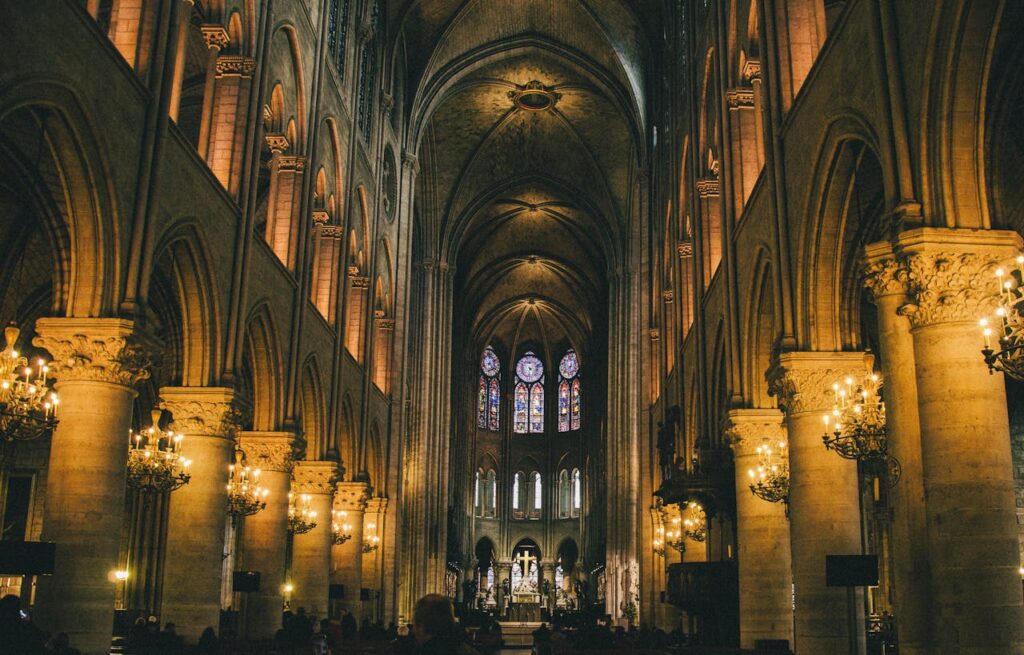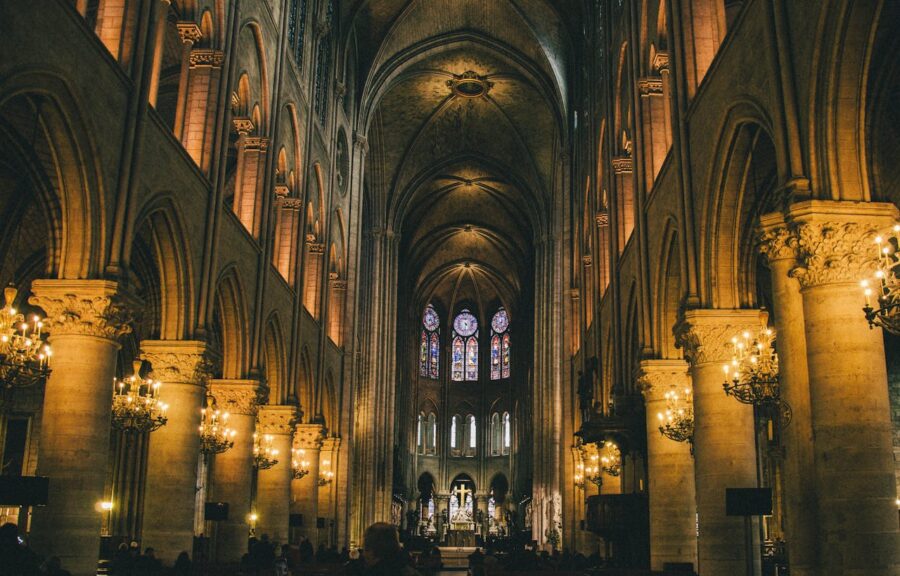 Origins and Characteristics
Origins and Characteristics
The Gothic style, which emerged in the 12th century, revolutionized medieval architecture with its emphasis on height, light, and intricate decoration. Originating in the Île-de-France region, Gothic architecture is characterized by pointed arches, ribbed vaults, and flying buttresses, which allowed for the construction of taller and more complex structures. The use of large stained glass windows, often depicting biblical scenes and saints, filled interiors with light and color, creating a sense of transcendence and divine presence.
Development and Spread
The Gothic style quickly spread across Europe, influencing the construction of cathedrals, churches, and civic buildings. Notable examples include Notre-Dame de Paris, Chartres Cathedral, and the Cologne Cathedral. The style evolved into distinct regional variations, such as the English Perpendicular Gothic and the German Brick Gothic. The adoption of Gothic architecture reflected the ambitions of medieval cities and the Church to create monumental and inspiring spaces that expressed their power and piety.
Technological Innovations
The development of Gothic architecture involved significant technological innovations. The use of ribbed vaults and flying buttresses distributed the weight of the roof and walls more effectively, allowing for thinner walls and larger windows. This engineering breakthrough enabled architects to build taller structures with more elaborate designs. The integration of these innovations with artistic elements, such as sculpted facades and intricate tracery, created buildings that were both structurally impressive and artistically magnificent.
Conclusion
The Gothic style had a profound influence on medieval architecture, transforming the design and construction of religious and civic buildings. Its emphasis on height, light, and decoration created some of the most iconic structures of the Middle Ages, reflecting the technological and artistic achievements of the period.
Tags: #GothicArchitecture #MedievalArt #ArchitecturalInnovation
Category: Medieval Art and Architecture
